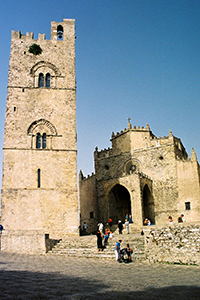Speaker
Description
Molecular beams injected into the Radio-Frequency Quadrupole cooler and buncher (RFQcb), ISCOOL [1], at ISOLDE [2] have been studied under varying conditions. The extracted fragments were detected using the new Time-of-Flight (ToF) detector [3] placed approximately 10 meters downstream the extraction point of the RFQcb. When a beam of molecules is injected into the RFQcb and interacts with the buffer gas, collision-induced dissociation processes may occur. The process of molecular dissociation is of interest within medical applications, for example in CERN-MEDICIS and the MEDICIS-Promed project, where $^{11}$C is studied as a possible treatment ion for hadron therapy [4]. In this case, carbon is extracted from the target material as carbon monoxide [5] since the molecule is more volatile than the atom. The objective of this work is to investigate if molecular dissociation occur inside the RFQcb when injecting ion beams of CO$^+$ and N$^+_2$. Two different buffer gases were used in the tests (pure helium or a mixture of helium and neon) and the radio-frequency field of the RFQcb was varied as the molecules, along with the dissociation fragments, were extracted from ISCOOL and detected using the ToF detector. The result of this work shows that the rates for molecular dissociation within ISCOOL were very small for both CO$^+$ and N$^+_2$, with the largest rates found for CO$^+$.
References
[1] C. Babcock et al., Nucl. Instrum. Meth. Phys. Res. B 317 (2013) 484–487.
[2] R. Catherall et al., J. Phys. G: Nucl. Part. Phys. 44 (9) (2017) 094002.
[3] S. Warren et al., To be published.
[4] R. S. Augusto et al., Nucl. Instrum. Meth. Phys. Res. B 376 (2016) 374–378.
[5] S. Stegemann et al., To be submitted to Nucl. Instrum. Meth. Phys. Res. B .
Acknowledgement
We would like to acknowledge the ISOLDE technical team for their contributions as well as Alessandro Masi for providing the data acquisition system.
This research project has been supported by a Marie Skłodowska-Curie innovative training network fellowship of the European commission’s horizon 2020 program under contract number 642889 MEDICIS-PROMED and by the Swedish Research Council.




